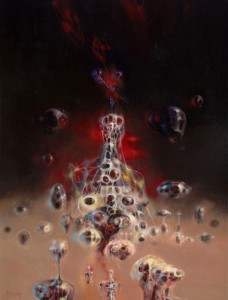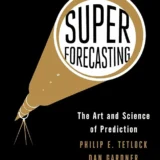
Familiar Art is Better than Unfamiliar Art!
This is a great addition to the list of “how we rank and value art,” contributed by a collector friend of mine who (like many of us) is frustrated by it. Although “familiarity” operates a bit more subtly than the others, it often is operating whenever we are faced with two artworks, seemingly equal in quality (to our eyes), yet one of them is valued much more highly than the other. Makes you stop and wonder: WHY? That’s the time to consider the possibility that Familiarity is influencing the value.
There are two ways that FAMILIARITY works, in terms of making art more desirable, and valued. Objects can become more familiar through greater exposure (repetition) or generational exposure (through one’s age cohort—people who are of similar age, share similar experiences).
Visibility Drives Appeal
The more collectors see and hear about art, or the work of a particular artist, and the more visible that artist’s work is, the more attractive it becomes to collectors. We know this works with advertising, so why not art? Constant repetition works. The more we see an advertisement, the more we remember it, the higher the chances that we will be persuaded to buy. It works for Geico’s Gecko, and it works for Frank Frazetta. Yes, he was a great artist. But he also had one thing that many other talented artists have lacked: an Elie Frazetta. She was one helluva marketer, as anyone who knew her would attest (me included). She worked tirelessly to establish his reputation, and later worked equally hard to insure that the world had access to his images, so that his art and his legacy would survive . . . no matter what. Among the most popular of these, were his “Conan” paintings. Sure, everyone loves Conan. But would they have loved REH’s creation as much, without Frazetta’s “Conan’s”? If there is anyone reading this blog who has not seen one—you probably stumbled on this blog by accident. 🙂
The Work that Visibility Does
In 2013, three works by Norman Rockwell sold for close to $60 million at an auction held at Sotheby’s—all three of them “celebrating homey, small-town America”

according to The New York Times report. While all three works were among the most popular of Rockwell’s 322 covers for The Saturday Evening Post, one of them—Saving Grace”—sold for $46.08 million, more than three times the previous auction record for the artist ($15.4 million). The other two were distant 2nds and 3rds in terms of price: $8.45 million and $3.24 million respectively. In each of the news articles I read, and I found more than half a dozen describing the results of this sale, the words used to describe “Saving Grace” were similar . . . “The best known . . . “, “One of Rockwell’s best-loved scenes”, “topped a 1955 readers’ poll at The Saturday Evening Post four years after it appeared the news of the sale.” Now, THAT’s familiarity writ large.
In similar fashion, the 1971 Conan cover was touted as a painting “that both defined the character and the visual language for the fantasy genre for decades to come” according to Rich Johnston—only one of many who have drawn similar conclusions for Frazetta’s works. Forget about the fact that Frazetta now seems like a piker in comparison to Rockwell—the key point I want to make here is that it’s the MOST familiar (popular) images that have garnered the highest accolades, and prices—within each of these art markets.

Images used for publication, by definition, reach a far larger public audience than personal works—so this sort of ranking bias affects those works as well. John D., the collector who came up with this idea, and a long-time fan of work by artist Richard Powers, provides an excellent example of how this hierarchy affects science fiction art. He compares two paintings, both large abstracts (and both published)…”Wine of the Dreamers” and a large red abstract work that was used for the cover of a SF Worldcon program book, Chicon V (1991). As the collector observes:
“I love both of these paintings. They both are excellent examples of Powers’ abstract surreal style. Which is the better painting? Totally subjective, but having seen both in person, I actually favor the Red Abstract. While I might place these two paintings firmly side by side on the “top shelf,” the price for these pieces are extremely different! The biggest difference (in my mind) is the fact Wine of the Dreamers is a “popular” image and is much more familiar to collectors, whereas the Red Abstract (while still published) is much less familiar.”
How does that difference in market “familiarity” with the image relate to price?

I am not at liberty to disclose what was paid for the abstract surreal personal work “Chicon V” (it was a private sale), but I can attest that the order of magnitude in price difference would absolutely support the collector’s argument. And if you have examples of your own, don’t hesitate to share them with me.
Does this mean that we should evaluate all opportunities to purchase art on the basis of familiarity? Absolutely not! Because there can be just as much danger lurking in decisions based solely on familiarity—which is often driven by popular fads and trends, and ends up being generational and based on nostalgia…..a dangerous phenomenon that I will address soon!










1 Comment